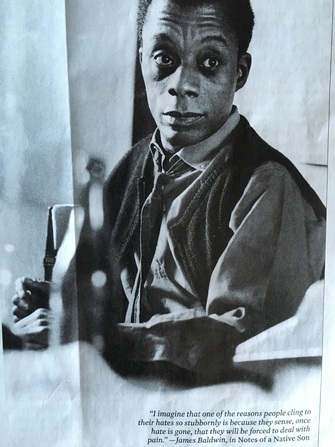
Some weeks ago, I was speaking with a group and the subject of the $20 bill came up. Someone expressed displeasure that Harriet Tubman was to replace Andrew Jackson on it. Someone else asked, “Who is Harriet Tubman?” I was floored. In case you don’t know, Harriet Tubman is one of the most famous abolitionists ever. She was born into slavery in the 1800’s and not only escaped, but returned, again and again, to slave territory to save others at tremendous risk to her own life and liberty. There’s a lot more to know about her but that’s just it in a nutshell. When I was about 8, my mother gave me a children’s book about the life of Harriet Tubman. I had never heard of her before. The book was amazing. I was awed and inspired by this daring hero. I imagined that I was she and made my friends play Underground Railroad in which we pretended we were escaping slaves, helping others to freedom. At that time, I lived in an all white neighborhood and I myself am not black but that didn’t ever occur to me or my friends as a reason not to imagine ourselves in these shoes until a grown up asked us why we were pretending to be black. We were completely confused and explained we weren’t “pretending to be black;” we were “pretending to be heroes, 'great American women' fighting slavery.” We didn’t understand why they thought that was funny. The dedication page on that book said something to the effect of, “For my daughter, that she may know the story of a great American woman.” Later on, I would wonder why we didn’t learn about more of these great American women in school. At 10, I decided to teach myself. I was lucky in that I had access to a great library so I just looked for books about women – they could be real, like Harriet Tubman, Marie Curie, Sojourner Truth, Susan B. Anthony, Joan of Arc, and “His Majesty Queen Hatshepsut” and the nameless woman’s story on the Trail of Tears that still haunts me – and they could be fictional – like Medea and Cassandra of Troy. Every story was like the most delicious food. I couldn’t consume it fast enough or get enough of it. Yet, almost none (if any) of these women got more than a cursory nod in any of my history classes. Without access (the library), a seed to motivate (like the gift of the Harriet Tubman book) and dedication, I would not have been aware of all these incredible women to motivate and inspire and learn from.
Eddie S. Glaude Jr. recently wrote an essay for TIME about Teju Cole’s book of essays, Jesmyn Ward’s new anthology and the influence of James Baldwin. It’s worth a read. You can access it here [http://time.com/4457112/james-baldwin-eddie-glaude/]. He writes:
“For Baldwin, white America needed to shatter the myths that secured its innocence. This required discarding the history that traps us in the categories of race; histories that justify the belief that white people matter more than others. He echoes here a critical point in Notes of a Native Son (1955): “Now, as then, we find ourselves bound, first without, then within, by the nature of our categorization.” Those categories (like ‘nigger,’ ‘welfare queen,’ ‘thug,’ and the ‘white people’ who invented them) arrest our ability to recreate ourselves and to imagine a more just world. Instead, we’re bound to a kind of thinking that orders the world on the backs of black people and fixes the place of white people in legend and myth.”
“For Baldwin, white people seemed hopelessly trapped by their myths, and others catch hell because of that fact. As he wrote in Ebony, “people who imagine that history flatters them are impaled on their history like a butterfly on a pin and become incapable of seeing or changing themselves, or the world.”
The problem is I think it’s not just white people trapped in those myths. It’s all of us. The classes we are inundated with as children, throughout adolescence and into adulthood too often give us a lesson in a very myopic and edited history – one that harms us with its lack of role models, lack of honesty and perpetuation of racial and gender stereotypes. That history is the one that led to my very sophisticated, well educated colleagues staring at a short film that told them one of the first women professional photographers was Asian American with child-like shock and joy. Why should we be so shocked? History is replete with daring and courage and brilliance, incredible American heroes of every race, women and men. Yet, so often, we don’t learn about them unless we actively take it upon ourselves to seek out the truth.
The night of the movie viewing, I remember turning to my husband in excitement and saying, “Wouldn’t it be amazing if we had actually learned our real history in school?” He paused for a moment and then said sadly, “Yeah. It really would.”
**The film referenced is "Call Me Mary" by Lava Buckley and is available on www.YouTube.com/AsAmFilmLab**


 RSS Feed
RSS Feed
